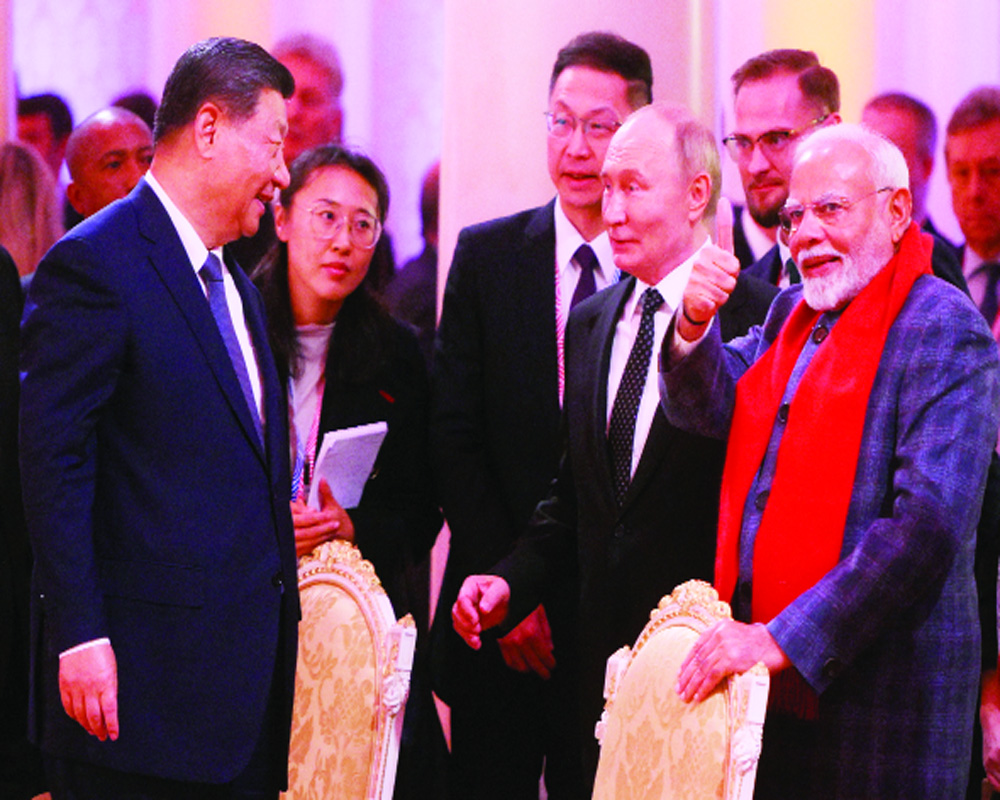The Summit was an interplay between India’s ties with the US and its issues with China
The BRICS summit in the historic city of Kazan, in Russia this week, was an important attempt to reset the balance of power between India and the member countries. It was another opportunity for the Indian Prime Minister to meet President Putin in a relatively short time interval. The highlight of the visit was a bilateral meeting between PM Modi and Chinese President XI, specially, after it was signalled that the Indo-Chinese troops would follow a structured disengagement process, on the borders.
The Indo-China relations had hit the lowest since the military escalation by China on Indian borders in 2020 and there have been no bilateral conversations since. While China maintained claims to parts of the Indian territory, even through military interventions, it wanted to engage with India on social and economic terms. India maintained that any further engagement with China would be based on an effective structured military de-escalation at the borders. The BRICS summit in Kazan was a sort of showcase meant for the Western countries regarding a parallel world order being in good health. China continues to view the India bilateral relationship through the US-India prism.
On the eve of the bilateral meeting between PM Modi and President Xi, a Chinese state-owned Global Times published an editorial that read “In recent years, the US has intensified its efforts to court India while applying pressure on China. China has maintained its position without wavering, remaining undeterred by the strengthening US-India cooperation. India has also observed that as US-India defence ties deepen, both countries claim to share “values,” but in reality, the US only wants to use India to exhaust China while being unwilling to provide India with guarantees. On the contrary, it may push India to the front line of confronting China.” At the same time, the long-standing border standoff with China has added extra defence burdens for India; policies aimed at “decoupling” from China’s economy have not prevented trade data between China and India from continuously rising. All these changes indicate that cooperation, rather than confrontation, aligns with the common interests of both countries and their peoples.
The BRICs summit served as an important reminder for India and China that both countries need to find peaceful resolutions to their mutual concerns while finding new partnership opportunities. The summit also showcased Russian President Putin’s prowess in attracting several important global leaders to his country, even as he is increasingly isolated by the Western Bloc. India has been actively engaging with every stakeholder in the Russian-Ukraine war.
There have been several high-level engagements between top officials of all of these countries involved in the war zone. India has restrained itself from offering a peaceful solution to the Russian-Ukraine war, unlike the other BRICS member countries such as China and Brazil. In Kazan during the bilateral meeting with President Putin, PM Modi mentioned “We have remained in regular contact regarding the ongoing conflict between Russia and Ukraine. As I have stated before, we believe that the resolution of issues should be achieved through peaceful means only. We fully support the earliest possible restoration of peace and stability.” Elaborating on India’s efforts towards peace efforts Indian Foreign Secretary Vikram Misri said “starting from the Prime Minister’s visit to Moscow in July this year and subsequently his visit to Kyiv in August this year and his engagement with the leadership of both countries must be seen as India’s efforts to foster peace.” The outcomes of the US presidential election in the next few weeks would further hasten a new global order.
(The writer is a policy analyst; views are personal)


























